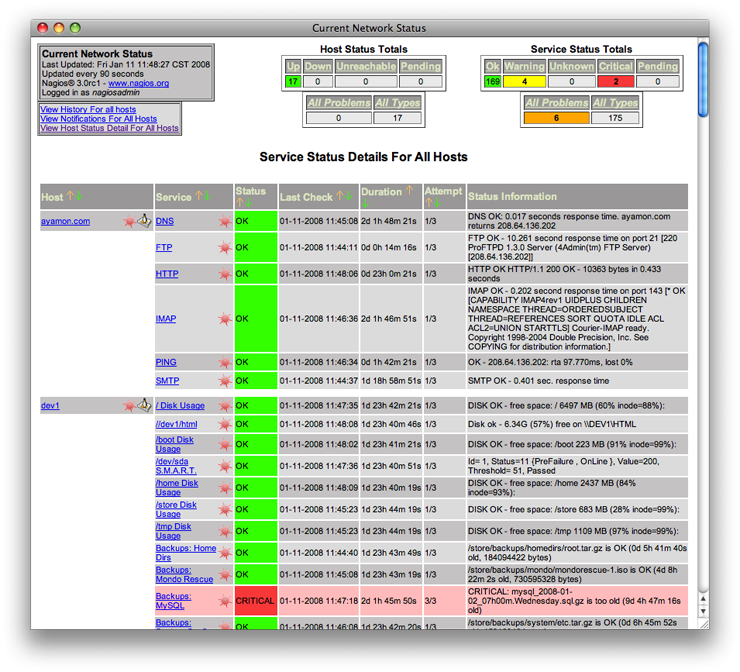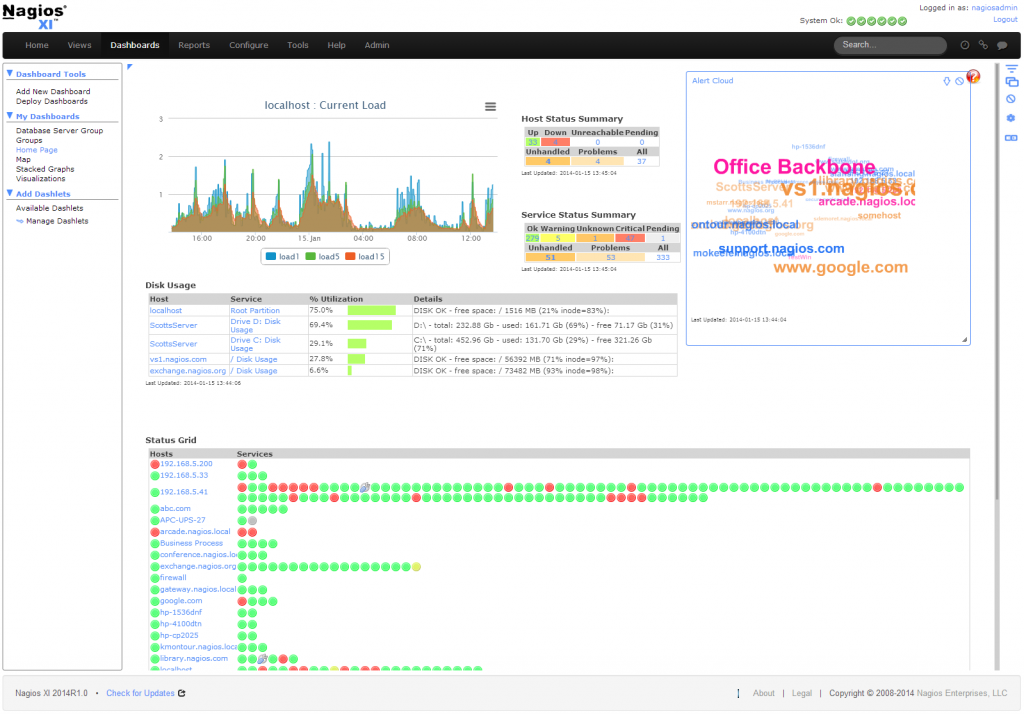Server monitoring software plays a crucial role in ensuring server health, responsiveness, and uptime. It proactively identifies performance problems before they negatively impact the server.
This software allows you to monitor both basic server availability and detailed usage data across various server types, including:
- Database servers (e.g., Microsoft SQL Server, Oracle, MySQL, ODBC)
- Web servers (e.g., Linux, Windows)
- Application servers
- FTP servers
- Mail servers
- SMTP and DNS servers
Server monitoring provides administrators with comprehensive visibility into the health and availability of their workstations and servers. Real-time notifications enable quick identification of issues, allowing for prompt action, such as reducing server load, and preventing downtime.
Server monitoring software (such as Nagios, Zabbix, or IPNetwork Monitor) can perform Windows/Linux server health checks, encompassing both availability and performance analysis, using various methods like:
- Ping and TCP checks
- SMTP/IMAP/POP3 checks
- WMI checks
- Service checks
- Database checks
If a server becomes unavailable, the monitoring software immediately sends alerts through various channels, including SMS and email, enabling administrators to prevent major issues.
Using Remote Network Monitoring Agents (software installed on servers or workstations in remote networks), administrators can monitor servers across multiple locations from a central point. These agents support various monitoring methods, such as SNMP, WMI, HTTP, Oracle, Ping, and more.
Server monitoring tools can also track metrics like CPU load, free disk space, memory utilization, and monitor router and switch ports using SNMP.
Advantages of Server Monitoring
- Simultaneous configuration of monitoring for numerous servers and devices.
- Securely monitor DMZs and remote offices from a central console—without VPNs, agents on every server, or firewall vulnerabilities.
- 24/7 server oversight from anywhere, as easily as from the office.
- Real-time reports and alerts eliminate the need for manual monitoring and keep you informed about your IT infrastructure.
Users can monitor various server and network resources using different server monitoring types:
|
|



